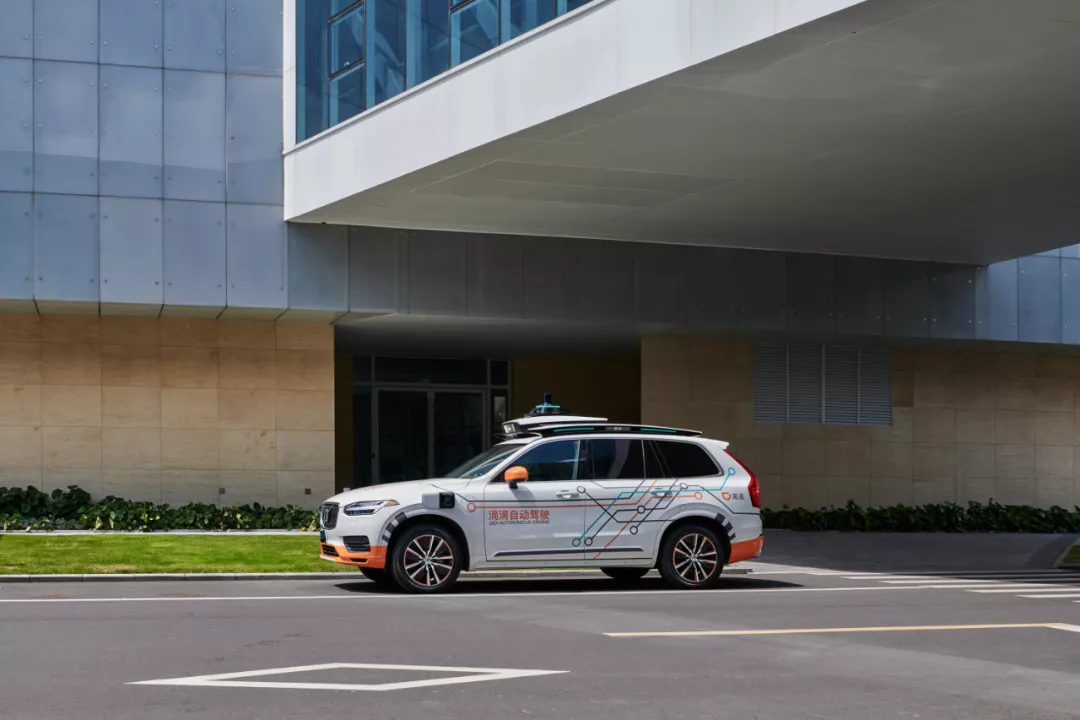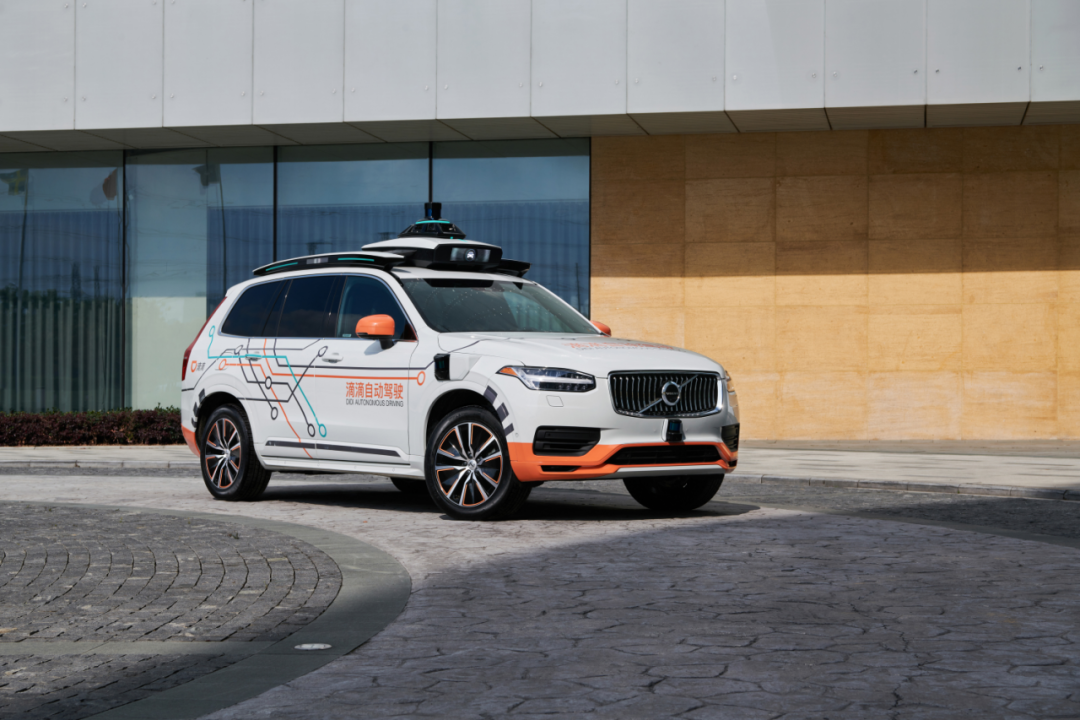*This article is reproduced from Autocarweekly WeChat Official Account
Author: Ling Hu Chong
On April 19th, Didi Autonomous Driving announced a brand new hardware platform – Didi Gemini at the Shanghai Auto Show. This platform has been upgraded in terms of electronic components, whole vehicle and experience, etc.
This is actually one of the means for Didi to face the next competition and rapidly self-innovate.
Welcome to the “Autonomous Driving Monster Room”
East Asia is often called the “monster room” on the Internet, because China, South Korea, and Japan, regardless of which one is put in Europe or South America, their national strength ranks top. Autonomous driving in China can be regarded as the “monster room” of the world, thanks to its large basic education and talent cultivation mechanism. There are more funds, more programmers, and more hardworking teams here, leading to an unimaginably exaggerated iteration speed and development speed of autonomous driving.
On the one hand, as more and more giants join the autonomous driving camp, consumers’ requirements are becoming higher and higher. At the same time, with the intensification of competition, Didi also needs to come up with more trump cards, such as the Didi Gemini autonomous driving hardware platform this time. Compared with the previous generation of products, the number of sensors in the whole vehicle has increased to 50, and the computing power exceeds 700TOPS. Every second, there are millions of points cloud imaging, and the overall cost remains the same.
The more processors there are, the more dependent the computing power is. How to use limited computing power to support a large number of sensors is a challenge for team architecture design and engineering capabilities. The ability to achieve this means that Didi’s upstream and downstream cooperation resources in the industry are becoming more and more abundant, and secondly, it also means that Didi’s autonomous driving is closer to the real usage scenario and has found a balance between performance and price. This is of strategic significance for Didi’s future operations.
Apple has turned controlling its supply chain to an art, while Didi, based on massive ride-hailing data and real road test data, has developed a new generation of hardware platforms that are more in line with the needs of unmanned driving operations by conducting multi-dimensional scene construction analysis of the autonomous driving travel area. Moreover, under the condition of unchanged cost, the new platform can achieve multi-layer redundancy in four aspects: high-performance core sensors, on-board autonomous driving system, remote assistance system, and front-loading mass-produced models after being loaded on the Volvo XC90 redundant model. It will become the main configuration of Didi’s new generation of autonomous driving fleets.
This is also the top configuration of autonomous driving in China.

This set of technological ecology is also quite complicated to talk about, but if you categorize it, you will find that basically, it is all for the sake of safety. As Zhang Bo, CTO and CEO of Autonomous Driving at Didi Chuxing, said, improving road safety is the original intention of developing autonomous driving.
Safety Logic of Didi Autonomous DrivingDidi Gemini is designed with multiple redundancies at multiple levels, allowing the primary and backup systems to be both independent and closely coordinated, providing users with multiple security guarantees. This solution also prepares for the testing stage of unmanned vehicles.
Among them, the redundancy of core high-performance sensor aims to further enhance the vehicle’s perception ability in complex scenarios such as tree shade, tunnels, rain and fog, backlight, and night. This relies on up to 50 sensors with a farthest detection distance of 300 meters and a minimum detectable distance of 5 centimeters. The comprehensive pixel of the camera-level is more than one hundred million. Previously, perception redundancy was generally divided into the “Lidar camp” emphasized by XPeng, Ideals, and NIO, and the “camera camp” advocated by Tesla.
However, in Didi’s configuration scheme, it is a combination of laser radar, camera, radar configuration for long, medium, and short distances, and various sensor functions such as infrared cameras, which can provide 12 layers of sensor redundancy coverage in the forward field of view, thus enabling the autonomous driving system to reach a higher level of safety.
In terms of redundancy of the on-board autonomous driving system, Didi has developed a fallback G backup system for autonomous driving with independent research and development. In addition to focusing on the application of routine driving, under extreme conditions, even if the main system is unavailable, it can still provide a sufficient safety response plan in milliseconds. Generally, the higher the ASIL level is, the greater the geometric level of system complexity, development cycle, and development cost will be. However, this is also a threshold that high-end autonomous driving systems must cross, and Didi has achieved the highest level of safety certification requirements of ASIL-D.
In fact, the scenarios faced by Didi are more complex than those of other brand products. Due to its own characteristics, the vehicle will travel on the road for a longer time and at a higher frequency, and the situation of passengers is also varied.
A private car usually carries only three or four people, while Didi operating vehicles are different, which places higher demands on the durability, reliability, and handling of emergencies of the system. Therefore, in addition to the remote assistance system redundancy, Didi also builds a third-level safety redundancy, a remote support system redundancy, in its autonomous driving remote escort center, which can realize close-distance multi-angle remote monitoring through four fish-eye cameras around the vehicle, and through comprehensive autonomous driving operation scene detection in the background, the hardware platform can assist the remote escort center to effectively implement remote assistance or achieve low-latency remote control through 5G.Cooperating with the world’s leading safety car manufacturer Volvo to build the 4th layer of safety protection implies a deeper meaning. DiDi Gemini has been first deployed on Volvo XC90 front-loading mass-produced redundant models with the ability to achieve braking, turning, power supply, communication redundancy, which is a combination of safety and safety, a powerful joint.
Of course, due to the nature of DiDi’s own travel platform, in addition to safety, it is destined to emphasize some aspects that other car manufacturers are not paying much attention to, such as the new hardware platform modification solution, which adds welcome light strips and interactive screens to improve the interaction experience between passengers, pedestrians and autonomous driving cars. The top interactive screen can display various modes such as pedestrian courtesy and pull-over parking, improving communication efficiency between cars and people. In addition, the new hardware platform equipment is highly integrated, and the available space in the trunk is further expanded.
Behind the DiDi timeline, in June of last year, DiDi Autonomous Driving launched a passenger-carrying test service for the public in Shanghai. In March of this year, DiDi Autonomous Driving announced a cooperation agreement with Guangzhou Huadu District for an intelligent network-connected vehicle industry project.
In addition to launching a new hardware platform recently, DiDi Autonomous Driving has also upgraded its software version and released the world’s first 5-hour continuous unmanned driving video in early April this year, demonstrating its stable performance in complex environments such as continuous driving against the sun, narrow road overtaking, unprotected left turns, and large-scale intersection U-turns.
With fast actions and stable software and hardware integration, DiDi has shown its desire and determination for deep involvement in autonomous driving and intelligent travel, because all iterations of relevant product performance and continuous evolution of services cannot be separated from safety.
Everything DiDi is doing is also for safety.
I think the DiDi timeline has shown that it is on the right path, which is what investors want to see.
This article is a translation by ChatGPT of a Chinese report from 42HOW. If you have any questions about it, please email bd@42how.com.
